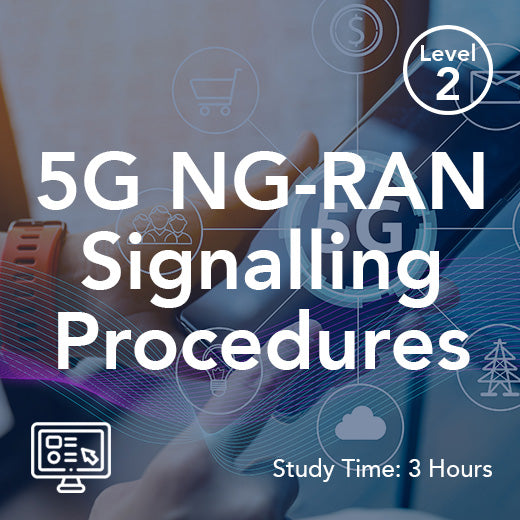Understanding Differentiated Services Code Point (DSCP): A Comprehensive Guide
- , by Paul Waite
- 19 min reading time
In the ever-evolving world of networking, understanding how data is prioritised and managed across networks is vital. One key element in this process is the Differentiated Services Code Point (DSCP), which plays a crucial role in determining how data packets are handled in various types of network traffic. The diffserv architecture provides the framework that underpins DSCP, enabling routers to classify and manage traffic based on packet markings in the DS field, and apply appropriate per-hop behavior (PHB) without deep packet inspection. By assigning different levels of priority to packets, DSCP ensures that time-sensitive information, such as voice or video calls, receives the bandwidth it requires, while less critical data waits its turn. This guide aims to demystify the concept of DSCP, making it accessible and understandable for anyone interested in gaining a clearer picture of how network traffic is efficiently organised and managed.
Introduction to DSCP
What is DSCP?
The Differentiated Services Code Point (DSCP) is a field within the Internet Protocol (IP) header that specifies the priority level of a data packet. This field helps routers and switches identify the type of service the particular packet really requires. By marking packets with different DSCP values, network administrators can ensure that critical traffic, like voice over IP (VoIP) or streaming video, gets the necessary bandwidth and low latency it needs. The DSCP code is used for packet classification purposes, enabling routers to identify the traffic type and assign the appropriate priority and handling to each packet. On the other hand, less urgent data, such as emails or file downloads, can be assigned lower priority. DSCP is a part of the Differentiated Services (DiffServ) model, which aims to provide scalable and straightforward methods for classifying and managing network traffic. Understanding DSCP is essential for anyone looking to optimise network performance and ensure efficient data transmission.
Importance of DSCP
The importance of the Differentiated Services Code Point (DSCP) cannot be overstated in modern networking. DSCP helps provide QoS by adhering to QoS standards and ensuring each type of traffic receives appropriate QoS treatment according to its requirements. As networks handle a diverse range of traffic types, from video conferencing to cloud applications, prioritising data efficiently becomes crucial. DSCP helps ensure that high-priority traffic receives the necessary bandwidth and minimal delay, thus maintaining quality of service (QoS). For instance, in a corporate environment, voice and video calls need to be smooth and uninterrupted, which DSCP facilitates by assigning higher priority to these packets. Additionally, DSCP aids in avoiding congestion and packet loss by managing less critical traffic effectively. By implementing DSCP, network administrators can optimise performance, improve user experience, and maintain reliability across the network. Understanding and utilising DSCP is essential for anyone involved in network management or design.
How DSCP Works
DSCP operates by embedding a six-bit value within the IP header of a packet, known as the DSCP value. These DSCP values are represented as binary values and are assigned to individual packets to determine their handling at each network device. This value indicates the treatment the packet should receive as it traverses through routers and switches in a network. Each DSCP value corresponds to a specific Per-Hop Behaviour (PHB), which dictates how routers manage the packet concerning factors like priority, bandwidth, and delay. For instance, Expedited Forwarding (EF) is a PHB designed for low-loss, low-latency traffic, often used for voice communications. DSCP allows for flexibility by accommodating 64 different code points, enabling network administrators to create custom traffic management policies. When a packet enters a network device, the DSCP value of ip packet is checked, and the packet is queued according to its priority. This systematic approach ensures that critical data is prioritised and efficiently delivered, enhancing overall network performance and reliability.
DSCP in Network Traffic Management
Traffic Classification
Traffic packet classification is a fundamental aspect of managing network traffic using the Differentiated Services Code Point (DSCP). By categorising traffic into different classes based on its nature and requirements, network administrators can assign appropriate DSCP values to each class. Common classifications include voice, video, real-time data, and best-effort traffic. Voice and video traffic, which are sensitive to delays and packet loss, typically receive higher DSCP values to ensure they get the necessary bandwidth and low latency. Conversely, non-critical traffic, such as file downloads or emails, is assigned lower DSCP values. This classification enables routers and switches to handle packets according to their priority, ensuring efficient utilisation of network resources. This process enables effective packet forwarding prioritization and supports prioritizing traffic based on specific business or application needs. By systematically classifying and marking traffic, DSCP helps maintain quality of service (QoS), minimising delays and improving the overall performance and reliability of the network.
Quality of Service (QoS)
Quality of Service (QoS) is a crucial component of network traffic management, and DSCP plays a pivotal role in its implementation. QoS refers to the ability of a network to deliver traffic with predictable and measurable service attributes, such as bandwidth, delay, jitter, and packet loss. DSCP is one of several QoS mechanisms used to implement QoS policies, and configuring a consistent service policy across network devices is essential for effective traffic management. By using DSCP to mark packets, network devices can prioritise traffic and allocate resources more efficiently. This ensures that critical applications, like VoIP and video conferencing, receive the necessary bandwidth and minimal latency. Implementing QoS through DSCP enables organisations to maintain high performance across their networks, even during periods of congestion. It provides a way to manage network traffic and guarantee that essential services operate smoothly, enhancing user experience and productivity. By leveraging DSCP for QoS, network administrators can optimise the allocation of resources and ensure that their systems meet the required service levels for different types of traffic.
DSCP Marking Techniques
DSCP marking techniques are essential for effectively managing network traffic. These techniques involve assigning DSCP values to packets based on predefined criteria, ensuring that each packet receives the appropriate level of service. Marking can occur at different points within a network, such as at the source device, a router, or a firewall. Effective DSCP management requires administrators to set DSCP values correctly at these points, and it is important to centralize DSCP management on network edge devices like routers, switches, and firewalls to ensure consistent QoS across the network. Centralizing DSCP configuration enables uniform packet prioritization, simplifies management, and helps maintain reliable network performance.
One common method is static marking, where packets are assigned a fixed DSCP value based on the type of application or service. Another approach is dynamic marking, which adjusts DSCP values in real-time based on current network conditions or policies. For instance, a network might increase the priority of certain types of traffic during peak hours. These techniques allow for flexibility in traffic management, enabling network administrators to respond to changing demands and maintain quality of service (QoS). By implementing effective DSCP marking techniques, organisations can optimise network performance and ensure that critical applications receive the necessary resources.
DSCP Field Structure
DSCP Bits Explained
The DSCP field is a six-bit section within the IP header, crucial for defining the priority and handling of packets across networks. These six bits allow for 64 (2^6) possible DSCP values, each representing a different level of service. The DSCP field is part of the larger Type of Service (ToS) byte in the IP header, which originally consisted of eight bits. In the DSCP model, the first six bits are used for marking, while the remaining two bits are reserved for future use or experimental purposes. Explicit Congestion Notification (ECN) utilizes these least significant two bits of the ToS/Traffic Class field to signal network congestion without dropping packets, enhancing traffic management and quality of service. Each DSCP value is associated with a specific Per-Hop Behaviour (PHB), dictating how routers and switches should treat the packet. DSCP also interacts with the link layer, supporting packet forwarding and prioritization as part of the overall network infrastructure. By assigning these values, network devices can make informed decisions about queueing, forwarding, and prioritising traffic. Understanding the DSCP field’s bit structure is essential for configuring edge routers and managing network traffic efficiently, ensuring that critical data is prioritised appropriately.
Common DSCP Values
Understanding common DSCP values is crucial for effectively managing network traffic. These values determine how different types of traffic are prioritised and treated by network devices. Some widely used DSCP values include:
-
Default (0): This is the default DSCP value and signifies best-effort service, typically assigned to default traffic such as standard web browsing or email, with no special prioritization.

-
Expedited Forwarding (EF) (46): Used for higher priority packets requiring low latency and minimal packet loss, such as voice over IP (VoIP), media streaming, and data-intensive operations. EF is ideal for traffic that needs minimal delay and is often used for premium services.
-
Assured Forwarding (AF): This class is divided into multiple AF classes (AF1x to AF4x), each AF class providing different levels of service. Within each AF class, there are three drop precedence levels, which determine how packets are treated during congestion—packets with lower drop precedence are less likely to be dropped, allowing for more granular traffic control. For example, AF11 (10) to AF43 (38) cover a range of priorities.
-
Class Selector (CS): Values like CS1 (8) to CS7 (56) are used for backward compatibility with older ToS-based systems.
EF is often used to emulate a virtual leased line, providing premium, low-latency, and assured bandwidth for latency-sensitive services.
These DSCP values help ensure that critical applications receive the necessary network resources, maintaining performance and reliability across diverse traffic types.
DSCP and IP Header
The DSCP field is a critical component of the IP header, playing a significant role in how packets are managed as they travel through a network. Located within the Type of Service (ToS) byte of the IP header, the DSCP field consists of six bits dedicated to classifying packets according to their priority level. These bits determine the Per-Hop Behaviour (PHB) that routers and switches should apply, influencing decisions related to queueing, forwarding, and prioritisation ip packets. By embedding DSCP into the IP header, packets carry essential information about their required service level from the source to the destination.
DSCP values inform network devices of the required forwarding treatment, which helps minimize queuing delays for time-sensitive traffic.
This approach allows network devices to efficiently manage resources, ensuring that high-priority traffic, such as real-time voice or video, receives preferential treatment over less critical data. Understanding the relationship between DSCP and the IP header is vital for anyone involved in network configuration and traffic management, as it directly impacts network performance and quality of service.
Legacy and Compatibility Considerations
As networking technologies have advanced, so too have the methods for managing network traffic efficiently. The Differentiated Services Code Point (DSCP) has become a cornerstone for classifying and managing network traffic in modern environments. However, many networks still include legacy devices and systems that predate DSCP, making compatibility a key concern. Understanding how DSCP interacts with older differentiated services mechanisms is essential for network administrators aiming to ensure seamless traffic flow and effective traffic management across diverse infrastructures. By considering both legacy and current approaches, organisations can implement differentiated services code point strategies that maximise performance while maintaining interoperability with existing equipment.
IP Precedence and DSCP Evolution
Before the widespread adoption of DSCP, network traffic was prioritised using a method called IP Precedence. This approach relied on a 3-bit field in the IP header to assign priority levels to packets, offering only eight possible classes for traffic management. As network demands grew and the need for more granular control became apparent, DSCP was introduced, expanding the field to six bits and allowing for 64 distinct code points. This evolution from IP Precedence to DSCP has enabled much finer differentiation between traffic types, supporting more sophisticated traffic management strategies. However, the transition also means that network administrators must be mindful of legacy devices that may only recognise the older IP Precedence field. Ensuring compatibility between these systems is crucial for maintaining consistent traffic prioritisation and avoiding disruptions in service, especially in mixed environments where both old and new devices coexist.
Class Selector Overview
To bridge the gap between legacy and modern traffic management, DSCP incorporates a mechanism known as the Class Selector. Class Selector code points are specifically designed for backward compatibility with IP Precedence, using a binary format where the three most significant bits represent the original IP Precedence value and the remaining three bits are set to zero (e.g., ‘xxx000’). This design allows devices that only understand IP Precedence to interpret DSCP values correctly, ensuring that packets marked with these values receive the intended priority even on older equipment. By leveraging Class Selector code points, network administrators can facilitate a smooth transition to DSCP while maintaining interoperability with legacy systems. This approach helps preserve the integrity of traffic prioritisation across the network, making it easier to manage network traffic and implement differentiated services without sacrificing compatibility.
Core DSCP Concepts
In today’s modern IP networks, the Differentiated Services Code Point (DSCP) is fundamental to managing network traffic effectively. By providing a robust framework for classifying and prioritising different types of traffic, DSCP enables network administrators to deliver reliable performance and meet the diverse needs of users and applications. Understanding the core concepts behind DSCP is essential for anyone involved in managing network traffic, as it lays the groundwork for implementing advanced quality of service (QoS) policies and ensuring optimal use of network resources.
Per-Hop Behavior (PHB) Explained
At the heart of DSCP’s effectiveness is the concept of Per-Hop Behavior (PHB). PHB defines how each network device—such as a router or switch—treats packets based on their assigned DSCP values as they traverse the network. This treatment determines the level of service each packet receives, including factors like priority, bandwidth allocation, and likelihood of being dropped during congestion. There are several key PHB groups: Expedited Forwarding (EF) is designed for traffic that requires minimal delay and loss, such as voice or video calls; Assured Forwarding (AF) offers multiple classes and drop precedences, allowing for nuanced prioritisation and drop probability control; and Best Effort (BE) provides standard service without special guarantees. By configuring DSCP values to align with the appropriate PHB, network administrators can ensure that each type of network traffic receives the desired quality of service, supporting everything from critical real-time communications to routine data transfers. This granular approach to QoS treatment is essential for delivering the performance and reliability expected in modern IP networks.
Implementing DSCP in Networks
Configuring DSCP on Routers
Configuring DSCP on routers is integral to implementing effective network traffic management. To access the router's configuration, administrators typically need to know the router's IP address and consult the router's manual for specific login credentials and instructions. This process involves setting up routers to recognise and appropriately handle packets based on their DSCP values. DSCP configuration is often performed on edge devices such as routers, firewalls, or gateways, and may also involve other network devices within the infrastructure. To begin, network administrators need access to the router’s configuration interface, often through command line or web-based management tools. Within the configuration settings, administrators can define policies that map specific DSCP values to desired queueing and prioritisation behaviours. For instance, traffic marked with DSCP value 46 (Expedited Forwarding) can be assigned to a high-priority queue, ensuring minimal delay for real-time applications like the VoIP traffic. It’s also essential to configure Access Control Lists (ACLs) to match traffic types and apply the correct DSCP markings. Note that not all devices support DSCP tagging, so administrators should verify compatibility across all relevant hardware before implementing changes. By properly configuring DSCP on routers, organisations can ensure consistent quality of service (QoS) across their networks, optimising performance and resource allocation for various applications and services.
DSCP in Enterprise Networks
In enterprise networks, DSCP is a vital tool for ensuring efficient traffic management and maintaining quality of service (QoS). Large organisations often deal with a high volume of diverse traffic, including voice, video, and data applications, each with different service requirements. By implementing DSCP, enterprises can prioritise critical services, ensuring that essential communications like video conferencing and VoIP receive the necessary bandwidth and minimal latency. This prioritisation is achieved by marking packets with appropriate DSCP values, allowing network devices to apply the correct queueing and forwarding policies. Additionally, DSCP helps manage network congestion by dynamically allocating resources based on current traffic conditions. DSCP also addresses congestion issues by enabling traffic policing and class-based policing, which enforce bandwidth limits and maintain service quality across different traffic classes. In doing so, enterprises can maintain high levels of performance and reliability, supporting business operations and enhancing user experience. Implementing DSCP effectively requires careful planning and consistent policy enforcement across all network devices, ensuring that the network meets organisational needs and adapts to changing demands.
Troubleshooting DSCP Issues
Troubleshooting DSCP issues is crucial for maintaining effective network performance and quality of service (QoS). Common problems can include incorrect DSCP markings, misconfigured network devices, or inconsistencies in DSCP policy enforcement. To identify and resolve these issues, network administrators should start by verifying the DSCP configuration on all routers and switches. This includes checking that the correct DSCP values are assigned to the appropriate traffic class types and ensuring that all devices are applying the same policies. Packet analysis tools, such as Wireshark, can be used to inspect the DSCP values in the IP headers of transmitted packets, helping to confirm that markings are as expected. Additionally, monitoring tools can track the performance of various traffic classes, highlighting any discrepancies. If issues persist, reviewing and adjusting Access Control Lists (ACLs) or queueing configurations may be necessary. By systematically troubleshooting DSCP issues, organisations can ensure their network operates efficiently, prioritising critical traffic and maintaining QoS.
Future of DSCP
Evolving Standards
The future of DSCP in network management points towards evolving standards that aim to meet the increasing demands of modern networks. As new applications and services emerge, the need for more granular traffic classification and prioritisation intensifies. This evolution is likely to include updates to the existing DSCP values and the introduction of new Per-Hop Behaviours (PHBs) to accommodate emerging technologies like 5G, Internet of Things (IoT), and cloud computing. Standards bodies, such as the Internet Engineering Task Force (IETF), continue to explore improvements in QoS frameworks, ensuring that DSCP remains relevant and effective. Additionally, advancements in machine learning and artificial intelligence could play a role in dynamically adjusting DSCP markings based on real-time network conditions. These evolving standards will provide network administrators with more robust tools to optimise performance, enhance user experience, and ensure that critical services receive the necessary resources across increasingly complex network environments.
DSCP in Modern Networks
DSCP continues to play a pivotal role in modern networks, adapting to the unique challenges posed by contemporary technologies. With the proliferation of cloud services, high-definition video streaming, and real-time applications, the importance of efficient traffic prioritisation has never been greater. Modern networks are characterised by their dynamic nature, often spanning multiple geographic locations and incorporating a mix of wired, wireless, and virtualised environments. DSCP helps manage this complexity by providing a consistent method for prioritising traffic across diverse network segments. Moreover, the integration of SD-WAN (Software-Defined Wide Area Network) technology leverages DSCP to enhance application performance by dynamically routing traffic based on real-time conditions. As the digital landscape evolves, DSCP remains a critical tool for ensuring that vital services receive the bandwidth and low latency they require, maintaining high levels of performance and reliability across increasingly sophisticated network infrastructures.
DSCP and Emerging Technologies
DSCP is poised to become even more significant with the rise of emerging technologies like 5G, the Internet of Things (IoT), and edge computing. These technologies introduce new types of traffic and application demands, requiring more nuanced traffic management strategies. For instance, 5G networks promise ultra-low latency and high bandwidth, necessitating precise prioritisation of data to meet these stringent requirements. Similarly, IoT devices generate a vast amount of data that must be efficiently processed and transmitted, often in real time. DSCP can be employed to ensure that critical IoT data is prioritised appropriately. Additionally, as edge computing brings processing power closer to users, DSCP helps maintain quality of service (QoS) by prioritising data flows between edge devices and data centres. By adapting to these changes, DSCP will remain a vital component in managing the complex traffic flows and patterns introduced by these cutting-edge technologies, ensuring networks can handle future demands effectively.


































